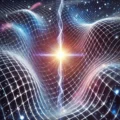Schrödinger’s Equation Predicts Impossible not Practical Waveforms
Explanation
Schrödinger’s wave equation, while central to quantum mechanics, doesn’t pinpoint a particle’s exact location; it provides the probability of finding it within a region. This probabilistic nature is fundamental to quantum mechanics.
The equation describes particles using wavefunctions. Here lies the “bamboozle”: while the wavefunction predicts particle behavior, it doesn’t mean the particle is a classical wave. Classical waves can have defined starting/stopping points and sidebands, but localized particles wouldn’t exhibit sidebands in the same way.
Schrödinger’s equation can predict sidebands even in energy level transitions, which seems counterintuitive for a “clean” transition. These sidebands arise from model limitations or imperfections in the transition. In a perfectly isolated system with an ideal transition, sidebands might vanish, but perfect isolation is practically impossible.
In summary, Schrödinger’s equation is a powerful tool, but it offers an incomplete picture. It reveals quantum complexity: wavefunctions describe probabilities, and particles aren’t classical waves. Equation predictions, including sidebands, must be interpreted within this probabilistic framework.
